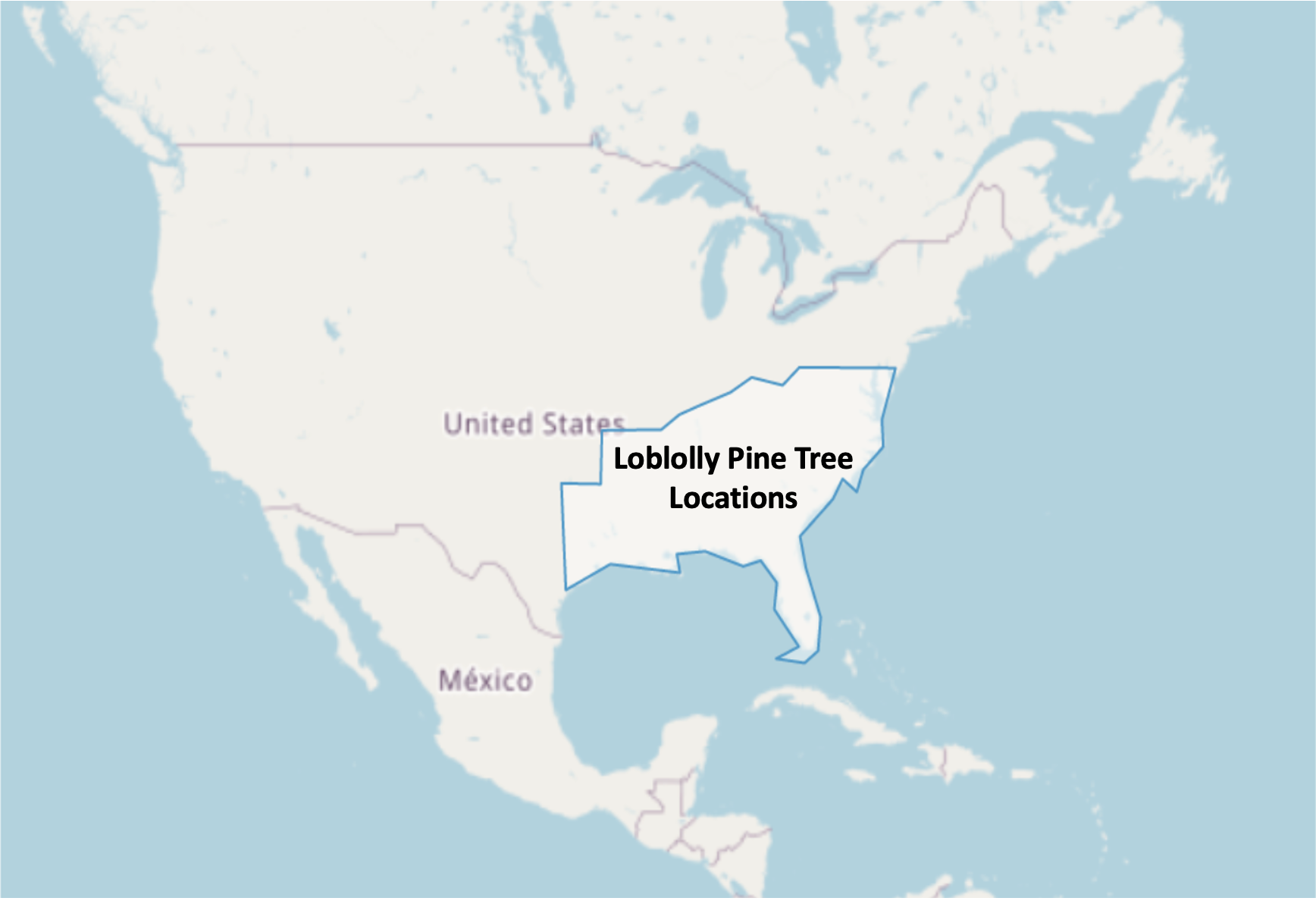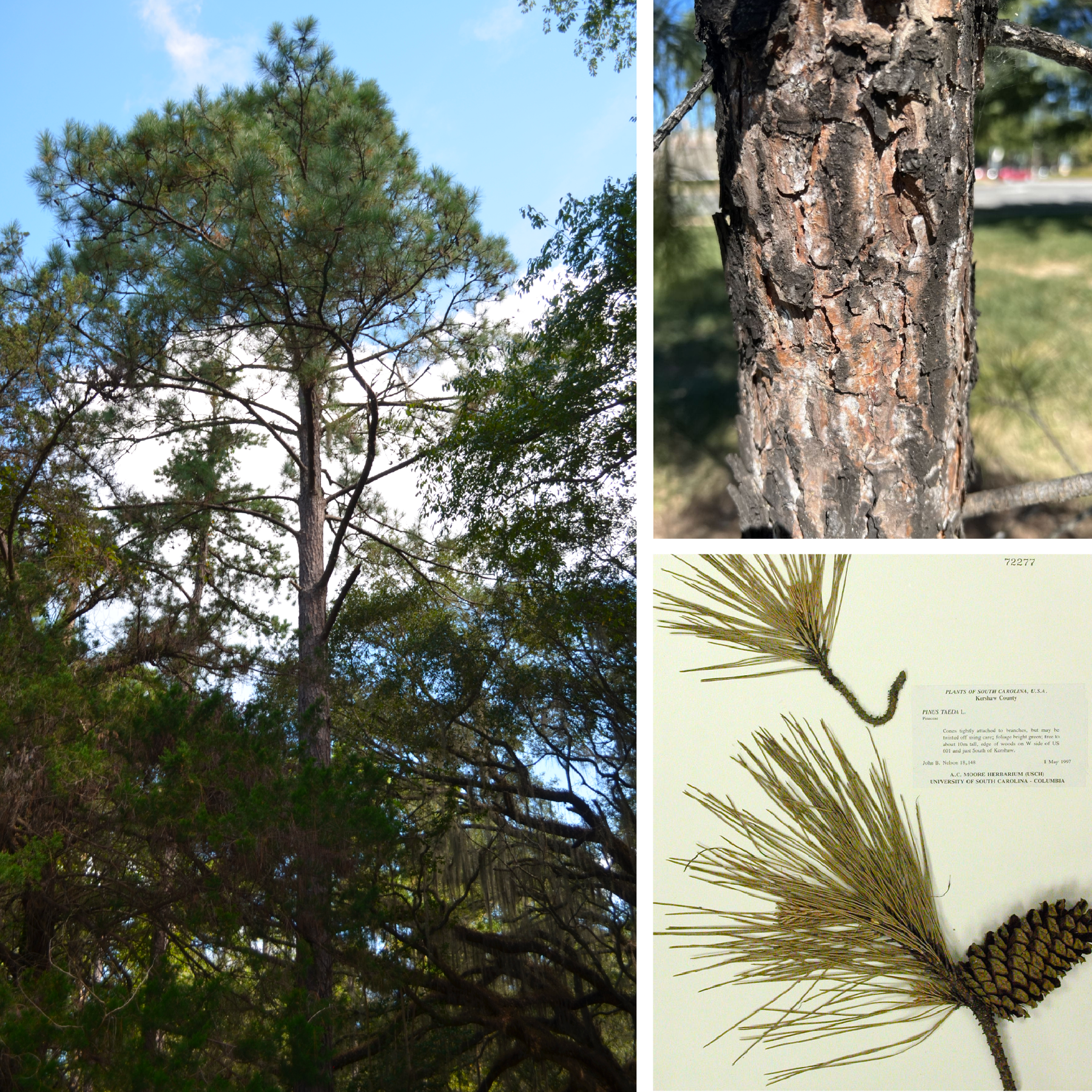NASA Moon Trees - Loblolly Pine - GLOBE Observer
NASA Moon Trees - Loblolly Pine

The Apollo 14 Mission's Loblolly Pine Moon Trees and other loblolly pine trees are native to the southeastern United States, from southern New Jersey to central Florida and west through the Gulf States to eastern Texas. They are also found in southeastern Oklahoma, central Arkansas, and southern Tennessee. Please note that loblolly pine trees are commonly used in landscaping and may be found in parks, arboreta, yards, and other locations well-outside their native range.
Loblolly pine (Pinus taeda), also called Arkansas pine, North Carolina pine, and oldfield pine, is the most commercially important forest species in the southern United States, where it is dominant on about 11.7 million ha (29 million acres) and makes up over one-half of the standing pine volume. It is a medium-lived, intolerant to moderately tolerant tree with rapid juvenile growth. The species responds well to silvicultural treatments and can be managed as either even-aged or uneven-aged natural stands, or can be regenerated artificially and managed in plantations. (Source: USDA Forest Service 
How to identify loblolly pine trees:
Loblolly Pine trees are evergreen trees that produce 5-9 inch-long needles that typically grow in bundles of three. The bark is dark and furrowed on older trees. Loblolly Pine trees produce cylindrical cones that are 2.5-6 inches long and have sharp prickles. The cones can stay on the tree for three years. Learn more:
Several free apps will help you identify tree species, including LeafSnap 


Example images of loblolly pine trees:

How to participate in the quest for the loblolly pine trees:
1. Identify loblolly pine trees and measure their height (and circumference if you have a tape measure) with the Trees tool in the GLOBE Observer app. Make sure you clearly see the top and bottom of the tree and that you can walk to the base of the tree from an origin point of 25-75 feet away from the tree. Before submitting your observation, please type "#MoonTree" in the comment box.
2. The app will notify you if you are within a certain distance from from an existing Apollo 14 Loblolly Pine Tree. If you are able to find a specific Apollo 14 Loblolly Pine Moon Tree, please take a tree height observation and optional tree circumference. Before submitting your observation, please type "#MoonTree" in the comment box.
Note: Our information regarding the location and status of the existing Apollo 14 Moon Trees is based on the NASA Moon Trees Archive. 
Accessible Apollo 14 Loblolly Pine Moon Trees:
(Click on the links below to learn more about each of the Apollo 14 Moon Trees from the NASA Moon Trees Archive)
Alabama
Montgomery, Alabama. State Capitol. 
Troy, Alabama. Pioneer Museum of Alabama. 
Tuscumbia, Alabama. Ivy Green. 
Arkansas
Ft. Smith, Arkansas. Sebastian County Courthouse. 
Washington, Arkansas. Old Washington Historic State Park. 
Georgia
Athens, Georgia. Clarke County Planning Department. 
Louisiana
Elmer, Louisiana. Palustris Experimental Forest. 
Tennessee
Knoxville, Tennessee. University of Tennessee. 
To see the locations of all known Moon Trees, visit the NASA Moon Trees Archive. 








